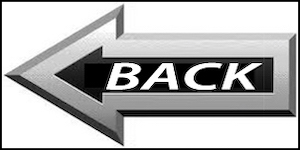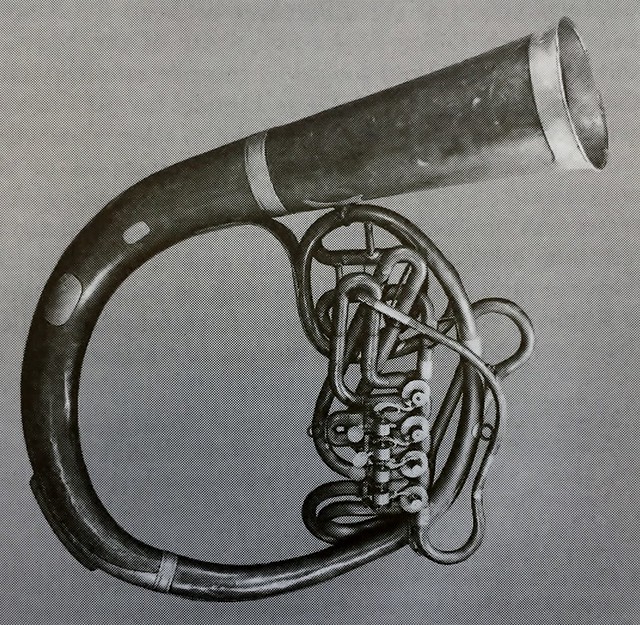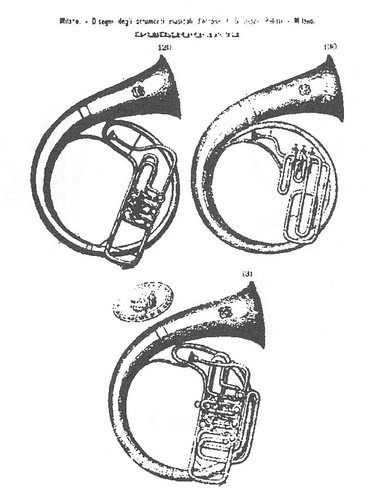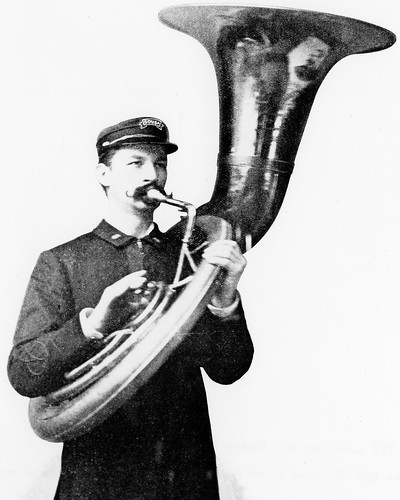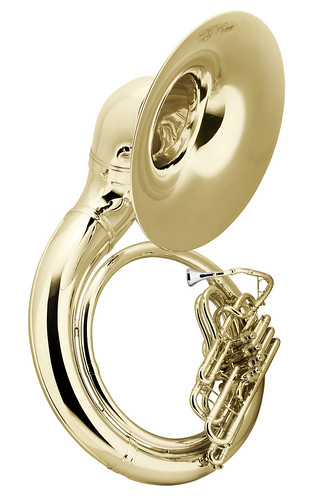Around 1845 in Milan, Giuseppe Pelitti created his Pelittone, which in its beginnings was a type of valve ophicleide or bombardon. In 1851 he applied for a contest organized by the Instituto Lombardo di Szienze, Lettere e Arti, with a version of the Pelittone with an alla tracolla (= shoulder strap) shape. Three years earlier, in 1848, Ignaz Stowasser had patented his Helicon in Vienna, already with this name. According to some sources, the instrument would be an improved version of another similar one, previously invented in Russia. We also find patents of the A. Sax family of Saxtubas (1849), inspired by the Roman call instruments.
The Sousaphone, developed at the request of John Philip Sousa (from whom it takes its name) was created by J.W. Pepper of Philadelphia, in 1893. Simultaneously, a big helicon developed in Manchester by Higham would be presented at the exhibition in Chicago. Generally tuned in Eb or BBb, the first versions used by Sousa in his band had the bell folded up, so they were colloquially given the appellation of "rain-catcher". It will not be until the end of his career that Sousa will approve the frontal-bell models, in spite of having always advocated for a more enveloping, rather than direct, bass sound. To be noted that there are existing models made in fiberglass instead of metal, which considerably lighten their weight.


